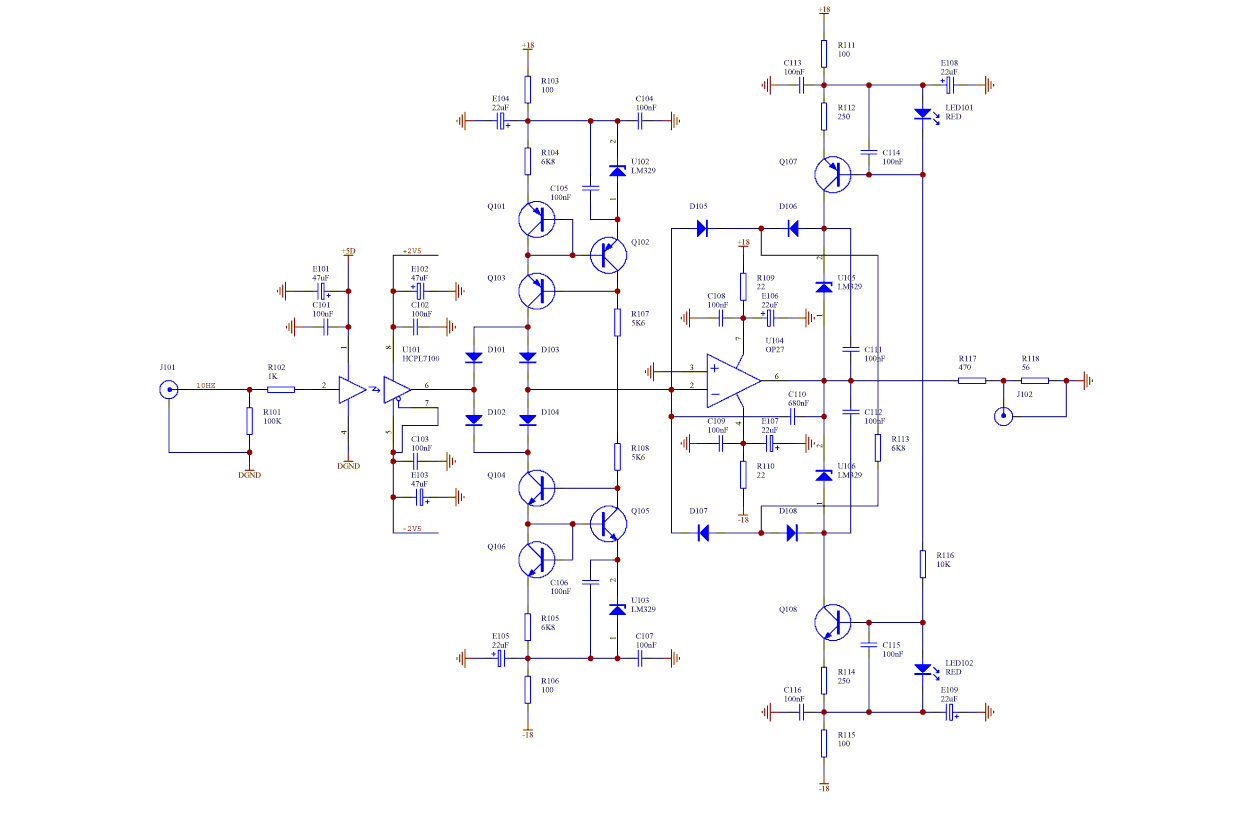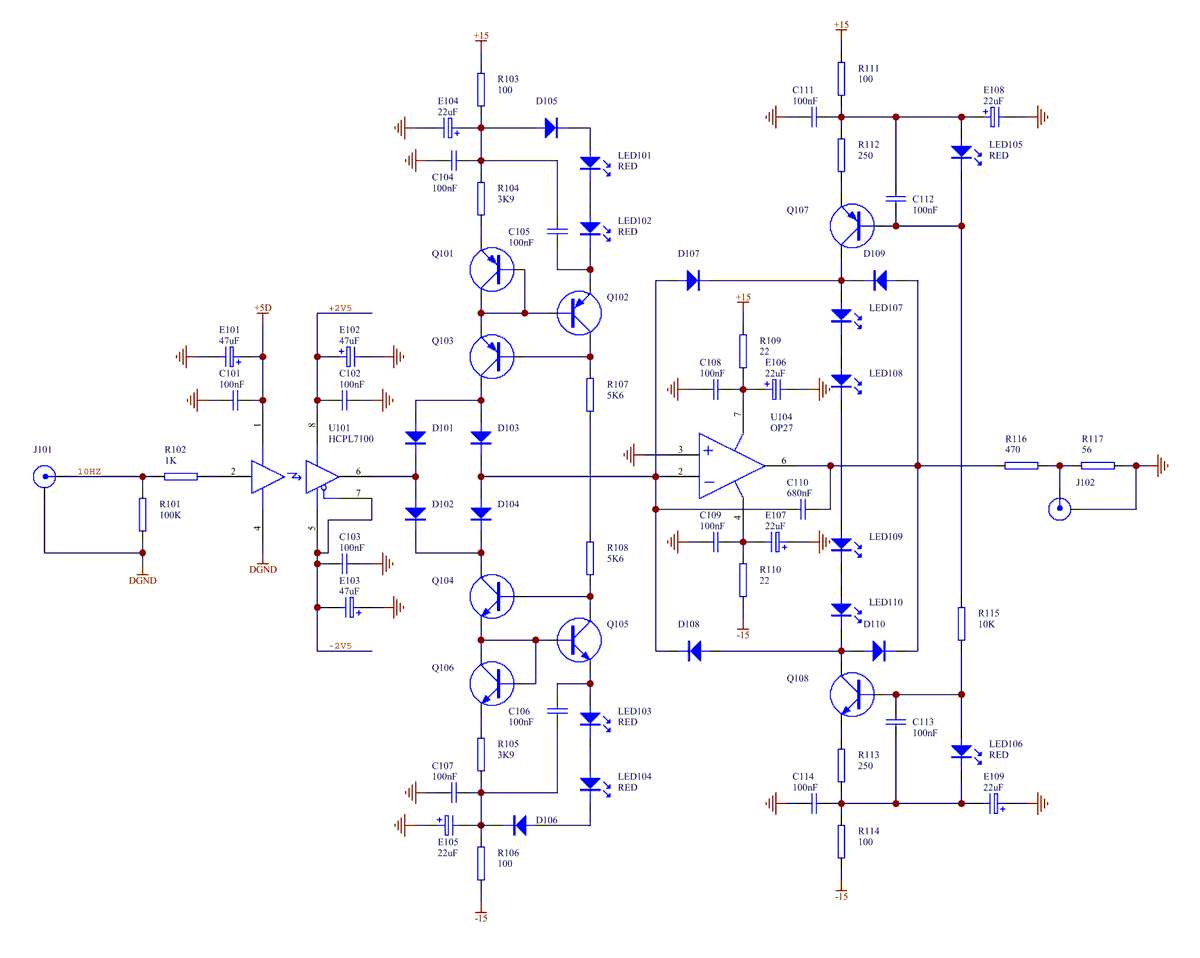
When evaluating ZCD performance a trapezoidal waveform generator with low output jitter can be used to drive a a pair of ZCD's in parallel. The time delay jitter between the 2 ZCD outputs is then measured. If the ZCDs are assumed identical then the jitter of a single ZCD is 0.7*measured jitter. However since ZCDs are used in pairs in a DMTD system this calculation may not be necessary. The trapezoidal waveform generator can be used to drive 3 ZCDs in parallel so that a 3 cornered hat technique can be employed to determine the jitter characteristics of each individual ZCD.
To evaluate ZCDs with subnanosecond jitter with a 10Hz input frequency, the trapezoidal generator should have a jitter of 25ps/√Hz or less. Such trapezoidal waveform generators are not off the shelf items.
The simplest trapezoidal generator with sufficiently low jitter uses a low jitter digital divider to divide down a low phase noise crystal oscillator output to the required frequency. The divider output is then used to ramp an integrator with low noise feedback clamps up and down. A resistive divider at the integrator output is then used to attenuate the signal to the required level and set the generator output impedance.
 |
The above trapezoidal waveform generator has a jitter of around 100ps/√Hz, which is adequate for simulating the noisier mixers. However a jitter about 5x lower than this is required to simulate the quieter mixers. To achieve this either each of the LM329's can be replaced by 25 LM329's whose voltages are averaged by a resistor network for a total of 100 LM329's or a quieter reference voltage source is required. Since the noise of a forward biased diode (including LEDs) is much lower than the noise of a diode in avalanche breakdown (even a buried zener like an LM329), a reference consisting of series stack of forward biased LEDs can be much quieter than an LM329. A ZCD trapezoidal waveform test generator employing series connected LEDs as references is shown below.
 |
In the above circuit the input transition to corresponding output zero crossing delay is nominally temperature compensated if identical LEDs and diodes are used both in the current sources and in the integrator feedback clamp circuit. However the waveform amplitude will be temperature dependent with a negative tempco, this isn't particularly significant as the mixer beat frequency output waveform is also temperature dependent albeit with a positive tempco.
TBC...